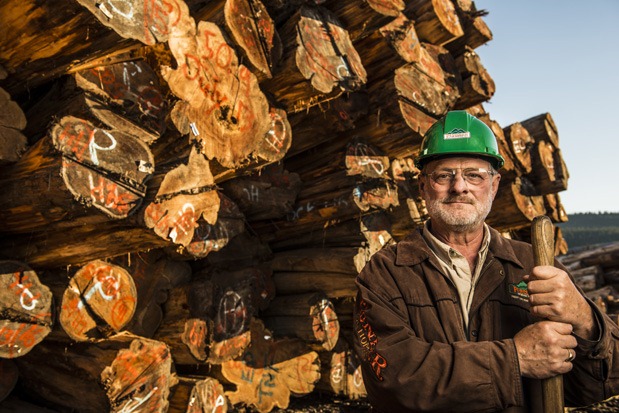
ADVERTISEMENT
- Pioneer Log Homes of British Columbia is the largest builder of handcrafted log homes in the world. Based in Williams Lake, BC, the company is 40 years old and has 120 employees working at three construction yards and one office. Pioneer is a family business with three generations spread across every level of the company.
- Each log home is prebuilt in Williams Lake, then disassembled and shipped around the world to its final destination. The reconstruction is called a “log set,” and for a small cabin the log set can be finished in less than a day. Log sets for larger, more complex structures can take anywhere from several days to several weeks.
- The primary wood used by Pioneer is Western Red Cedar (WRC), which only grows on the West Coast of North America. Its natural oils and resins repel insects and prevent decay, making it the perfect building material. WRC trees grow very tall, have a straight wood grain, contain less moisture when green and dry faster than any other wood, allowing for unequaled stability in a log wall. WRC’s cellular structure also shrinks very little as it dries, making it an excellent insulator.
- The average Pioneer log home is 2,500 square feet. It takes two to three months to design, three to four months to build, and utilizes 100-125 logs. The home will last for 300+ years.
- A single tree-worth approximately $2,000-can produce one or two house logs, depending on the size of the house and tree.
- Each log needs to dry for an entire year before it can be used in a home, to allow the moisture content to fall from 25% to 15%.
- A “Family Tree” is a centerpiece or character log that supports a home’s roof system. A Family Tree has a root base measuring six to fourteen feet across.
- There are no nails in a Pioneer log home. Everything is custom carved to fit together perfectly with notches and special timber joinery. There are also giant wood screws and long threaded rods to help secure all log work to the foundation. The notches and joinery provide a structural wall that has movement and flexibility in case of extreme weather, or even earthquakes.
- Western Red Cedar is an excellent insulator, but all exterior log walls are also partially hollowed with a lateral groove and fitted with insulation.
- It can take one person an entire day to peel a single house log-depending, of course, on the caliber of the person. Peeling is the first job a new employee will get, and it is the most physically grueling job in the yard. Some new hires will only last a few hours, but those who tough it out earn the possibility of being trained for more complex jobs in the log construction process.
- Pioneer has built log outhouses, log mansions, and everything in-between. The biggest house Pioneer has ever built is 112,000 square feet, and the smallest cabins can be as tiny as 320 square feet.
- Pioneer has many repeat customers, some of whom have multiple Pioneer structures all over the world.
- There are two kinds of log structures. A “full log” house is the traditional building method with dozens of logs stacked horizontally. A “post-and-beam” log house will mix horizontal logs with vertical logs, providing a different appearance and allowing for different types of finishing materials. Interior open spaces and large great rooms are common for both types of log construction.
- Each log goes through eight stages to become part of a home:
- Rough peel to remove the bark
- Final peel to expose the inner beauty.
- Rough scribe for all notched corners.
- Chainsaw to cut the log to size and rough cut the notches.
- Slick to shape the log and remove blemishes.
- Scribe to create precision notches so that each log will fit exactly on top of the one below.
- Final cut all notches and lateral grooves.
- Final slick and fit on the log wall.
- All of these stages are completed by hand.
HGTV your inbox.
By clicking "SIGN UP” you agree to receive emails from HGTV and accept Corus' Terms of Use and Corus' Privacy Policy.
Thanks for subscribing to HGTV.ca!




